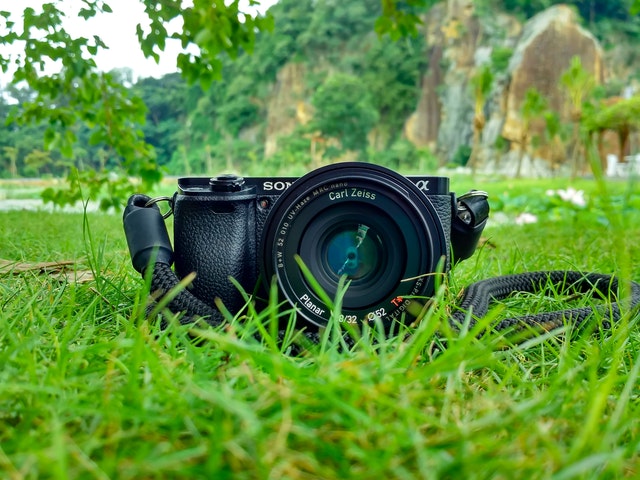The world’s first photograph was taken in Saint-Loup-de-Varennes, France in either 1826 or 1827. View from the Window at Le Gras was captured by Nicéphore Niépce at his family’s country home. The photograph was produced by exposing a bitumen-coated plate in a camera obscure over the course of several hours.
In 2003, Life magazine included it in its book ‘100 Photographs that Changed the World’. Fast forward almost 200 years and the practice of taking photos is everywhere. Anyone who carries a mobile phone in their pocket can take a photograph countless times faster than Nicéphore Niépce and of quality that he scarcely could have imagined.
In this blog post, we will highlight how to take good photos by sharing 8 effective tips. Whether you are keen to honor Mr. Niépce by taking stunning photographs from your bedroom window, a photograph of amazing scenery, or just a simple selfie, then this blog post is for you.
Today, approximately 1.43 trillion photographs are taken globally each year. More than 90% of these are taken on mobile phones. We have the ability to take incredible photographs whenever we like, however ensuring that you capture a good quality photo requires knowledge.
1. Take Your Photos at Eye Level
If you are taking a photograph of someone else, it’s important to hold the camera or phone at their eye level (unless you’re practicing your Dutch angles). If you are taking photographs of children, stoop down to their level rather than simply pointing the camera downwards. A photograph taken at eye level is more inviting and personal.
2. Use the Flash Outdoors
You might think that the flash function is only needed in dark settings. However, if you are outside on a sunny day, it can make a real difference in photo quality and give you more control over the light. It can help to fill in harsh shadows and brighten up the subject’s eyes and face.
3. Move Your Subject From the Middle of the Shot
By moving your subject from the center to the side of a shot, whether it is a person or a monument, for example, you will take a photograph with far more life.
This kind of shot allows you to capture your subject and show more of the environment, without obscuring it on either side of the subject. Just be sure that you focus on your subject before taking the photograph unless your camera has auto-focus.
4. Become Acquainted With Vertical Photographs
Many of us have a habit of only taking horizontal landscape shots when taking photographs of the world around us. Vertical photographs aren’t just great options for photos of people and they can add amazing depth to a shot.
Photographs of tall structures, such as trees or a lighthouse near a cliff, will look great when taken vertically. As with everything else, practice makes perfect.
5. Direct Where You Want Your Subjects to Stand
By giving your subjects some directions on where to stand and how to pose, you can drastically improve the quality of your photographs. This is especially true when taking a group photo.
Rather than 5 people standing side-by-side in a straight line, take the time to position your subjects. Take charge with how you want everyone to pose and where you want to take the photograph, given that the background also plays a part in overall quality.
6. Capture Action Shots With Burst Mode
Burst mode allows you to take multiple high-speed photographs of a moving subject. You will be able to take sharp photographs that are full of expressive movement.
Imagine, for example, that your son or daughter is playing a soccer match and they are dribbling the ball before unleashing a ferocious shot that scores a goal, resulting in a wild celebration.
Using burst mode, you can capture 10 photographs per second. This means you’ll be able to capture the subtle movements of your son or daughter as they run, shoot, and celebrate. It’s a really fun mode to play around with and can result in amazing shots.
7. Blur the Background
An easy way to achieve a more professional look for your photograph is to blur the background. This helps to put the focus on the subject and helps them to stand out, removing distractions. This way, the background is not competing for the viewer’s attention.
8. Play Around With Camera Filters
Using filters is a great way to enhance colors, minimize reflections and glare, and create a specific effect that enhances the final look of a photograph. Your camera phone will have a range of filters available when editing photos while you can add optical attachments to the front of the lens of a physical camera.
Some of the primary benefits of using photograph filters include:
- Adds colors and contrast
- Creates movement
- Enhances images
- Changes white balance
- More balance exposures
Once you have your photographs taken, it’s important to keep your photo library clean. Click here to learn how to clean up iPhoto junk.
Effective Tips How to Take Good Photos
A photograph speaks a thousand words. It documents life experiences, affords immortality, showcases beauty in the world, preserves memories, and much more. The above photography tips are designed to help you take better-quality photographs.
The best advice of all is to practice and play around with your camera’s setting. Like this blog post on how to take good photos? Be sure to check out our other informative articles on a wide range of interesting topics.










